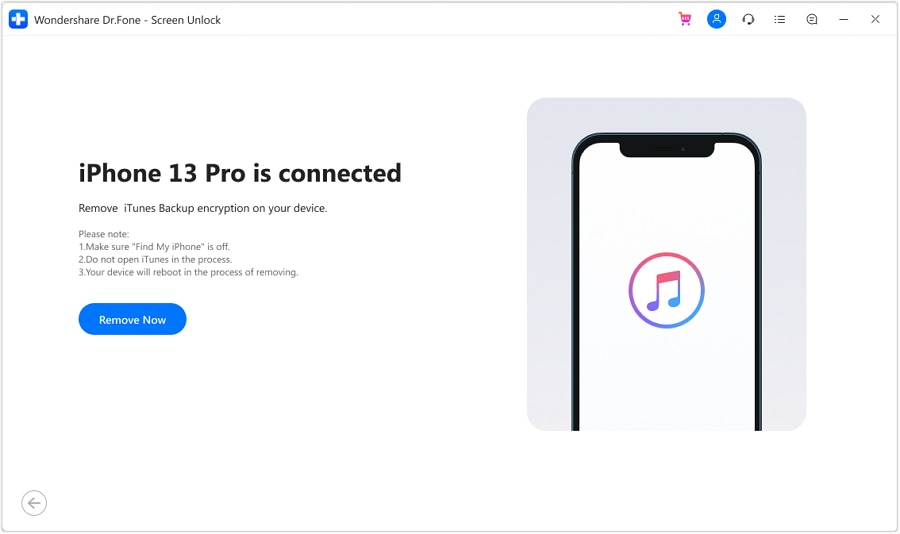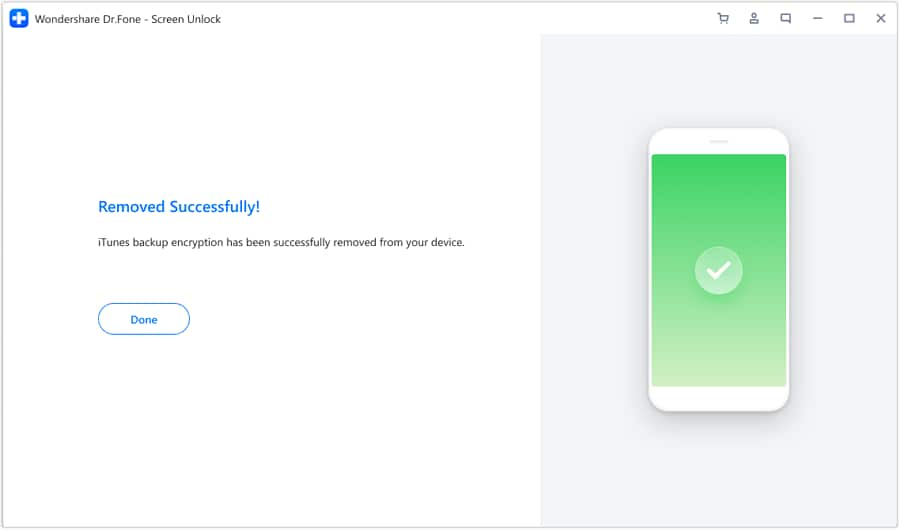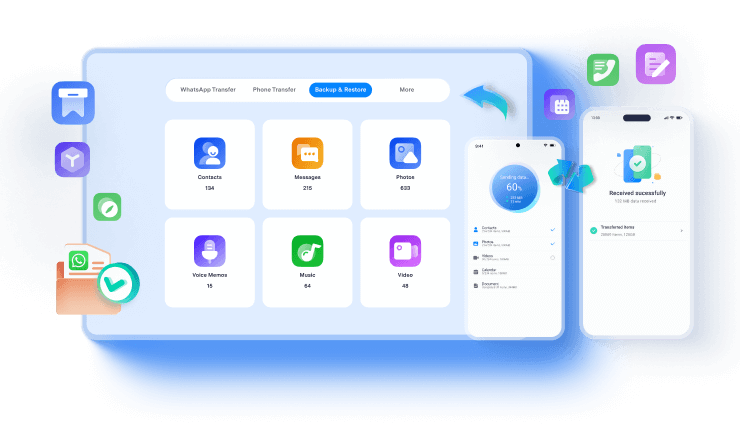Some customers reported forgetting their Apple iPhone encryption password and attempting to deselect "Encrypt iPhone backup" in iTunes. If you're seeking an actual solution, you've arrived at the correct place. We've written this post to show you different ways to turn off protection on your iPhone, as well as additional tips for fixing iTunes backup troubles and other concerns.
Let's get this party started.
Part 1: Why is my iphone backup encrypted?
It's all about grasping the notion of encrypted backups so that password security may be added. A password, as the name implies, protects a specific file or folder against unwanted access. Encrypt iPhone Backup is a function in both iTunes and Finder that allows you to encrypt data. Encrypted backups include far more and critical data than unencrypted ones.
It also includes the following information.
- Wi-Fi preferences
- Passwords saved
- Health information
- Website history
- Call history
They will not, however, include your Touch ID, Face ID, or device passcode.
Backup encryption, on the other hand, is not enabled by default. For the first time, you must enable the Encrypt Backup option in iTunes or Finder. After that, all of your backups will be encrypted instantly.
Part 2: How to Turn Off Encrypt iPhone Backup With Password?
Click the Encrypt iPhone backup box in iTunes to switch off backup encryption; the quickest option is to login to your account and read the directions to complete the operation. What happens if you forget your password? If you didn't recall it, Apple claims there's no way to off Encrypt Backup if you forget it, but it also provides you two options:
- If you have an iCloud account, you can backup and restore your data without having to use iTunes. It's also simple to accomplish.
- You can try to reset the password and create a fresh encrypted backup if you don't have an iCloud account.
Option 1 is suitable for those who have already set up an iCloud backup. If you only want to remove encryption from an iTunes backup, option 2 is a preferable alternative. Option 2 is also made easy for users of iOS 26 and subsequent versions.

As previously stated, this solution is applicable to iOS 26 and subsequent generations. As a result, if your smartphone isn't running iOS 26 or later, you should upgrade it ahead of time.
Part 3: How to Turn Off Encrypt iPhone Backup Without Password?
- Method1: Remove iTunes Encrypted Backup Password with Dr.Fone - Screen Unlock iOS
- Method2: Resetting iPhone settings
- Method3: Using iCloud Backup
- Method4: iTunes Password Decryptor
- Method5: Experiment with every possible passcode
Method 1: Remove iTunes Encrypted Backup Password with Dr.Fone - Screen Unlock iOS
Removing iTunes encrypted backup password with Dr.Fone - Screen Unlock iOS is a straightforward process that ensures access to your iOS device's backup files. Dr.Fone - Screen Unlock iOS simplifies the decryption task, offering a user-friendly interface. Simply launch the software, select "Remove iTunes Backup Encryption Password," and follow the intuitive steps. Dr.Fone - Screen Unlock iOS employs advanced algorithms to swiftly and safely eliminate the encryption, allowing you to remove the iTunes backup encryption without data loss. Whether you've forgotten the password or want to access your backup seamlessly, Dr.Fone - Screen Unlock iOS provides a reliable solution, ensuring a hassle-free experience in managing your iOS device backups.
- Step 1: To use the specific tool, open Wondershare Dr.Fone - Screen Unlock iOS and go to Toolbox > Screen Unlock > iOS.

- Step 2: Once it opens in a new window, proceed by selecting "Remove iTunes Backup Encryption" to use this function.
- Step 3: Once the platform detects and connects to the device, a specific message will be displayed, along with the "Remove Now" button, which will automatically remove the iTunes backup password.
Before you click "Remove Now," please carefully read the following 3 notes:
1. Ensure that "Find My iPhone" is turned off.
2. Do not open "iTunes" during the process.
3. Your device will reboot during the removal process.

- Step 4: When the process starts, a prompt window will open, showing the progress. If necessary, you can cancel the operation by clicking the "X" button at the top-right of the prompt window.

Method 2: Resetting iPhone settings
- Step 1: Open the Settings app, go to General, and then scroll down until you find "Reset," which you should hit.

- Step 2: Enter your smartphone passcode after tapping "Reset All Settings."
- Step 3: To reset your settings, follow the instructions. Your user data and passwords will not be affected, however settings like display brightness, Home screen layout, and wallpaper will be reset. It also deletes your backup password, which is encrypted.
- Step 4: Reconnect your device to the Finder or iTunes and follow the instructions above to generate a new encrypted backup.
You will be able to generate a new encrypted iTunes backup with this approach, but you will not be able to restore the prior backup.
Method 3: Using iCloud Backup
If you already have an iCloud backup, use it for recovery.
- Step 1: Switch on the smartphone and look for the Hello Screen. If you have previously set up your iPhone, you should wipe or delete all of the information.
- Step 2: Choose Apps & Data> Restore from iCloud Backup from the Apps & Data menu.
- Step 3: Log in to your Apple ID account and choose Backup. Also, make absolutely sure the Wi-Fi connection is turned on during the recovery.
Method 4: iTunes Password Decryptor
If you wish to stop iPhone Backup without losing your data, you must first retrieve the backup password, then unlock your encrypt iPhone backup option and disable encryption. Here's how iTunes Password Decryptor can help you get things done:
- Step 1: On your Windows PC, download and install the iTunes Password Decryptor programme.

- Step 2: Open this software and import the iTunes backup file.
- Click the Open button, then click the Add file button to add it manually.
- Select the Manifest.plist file from the path mentioned below and click Open to add it.
C:\Users\(username)\AppData\Roaming\Apple Computer\MobileSync\Backup
- Step 3: From the list, pick one password attack type and configure its characteristics. Mask or Dictionary attacks may be a smart alternative if you still recall a portion of your password. Use the default Brute-force assault if you have completely forgotten your password. If you choose the right one, you can successfully recover the password for your iTunes backup file.
- Step 4: Begin regaining access to your iPhone backup password. To begin, press the Start button. Then it immediately begins decrypting your iPhone backup password for you.

Method 5: Experiment with every possible passcode
And, when someone tries it for the first time, they usually try all of the potential passcodes. Even though it is the most straightforward technique, it is possible to overlook one of them. So, here's a list of all the passwords you may use.
It's possible for you to have it:
- Default password, i.e., 0000
- Computer login password
- Apple ID password
- Hard Disk Encryption password
- Different websites password
- Password for Wi-Fi
- Password for email
- Administrator's passcode
- Passcode for iPhone
Conclusion
To sum up, we recommend that you keep your passwords securely and encrypt iPhone Backup passwords when they are created. It is preferable to prevent such issues. Instead of putting the passwords to the iPhone's notepad, you may either create a hidden folder or save them somewhere secure. However, no matter how safe your device is and what iPhone encryption you use, credential leakage is possible, and it may lead to a variety of problems you can't even anticipate. So, when it comes to iTunes and other important passwords, remember that prevention is better than cure and encrypt iPhone backup password.
New Trendings
Top Stories
All Categories










Axel Nash
staff Editor